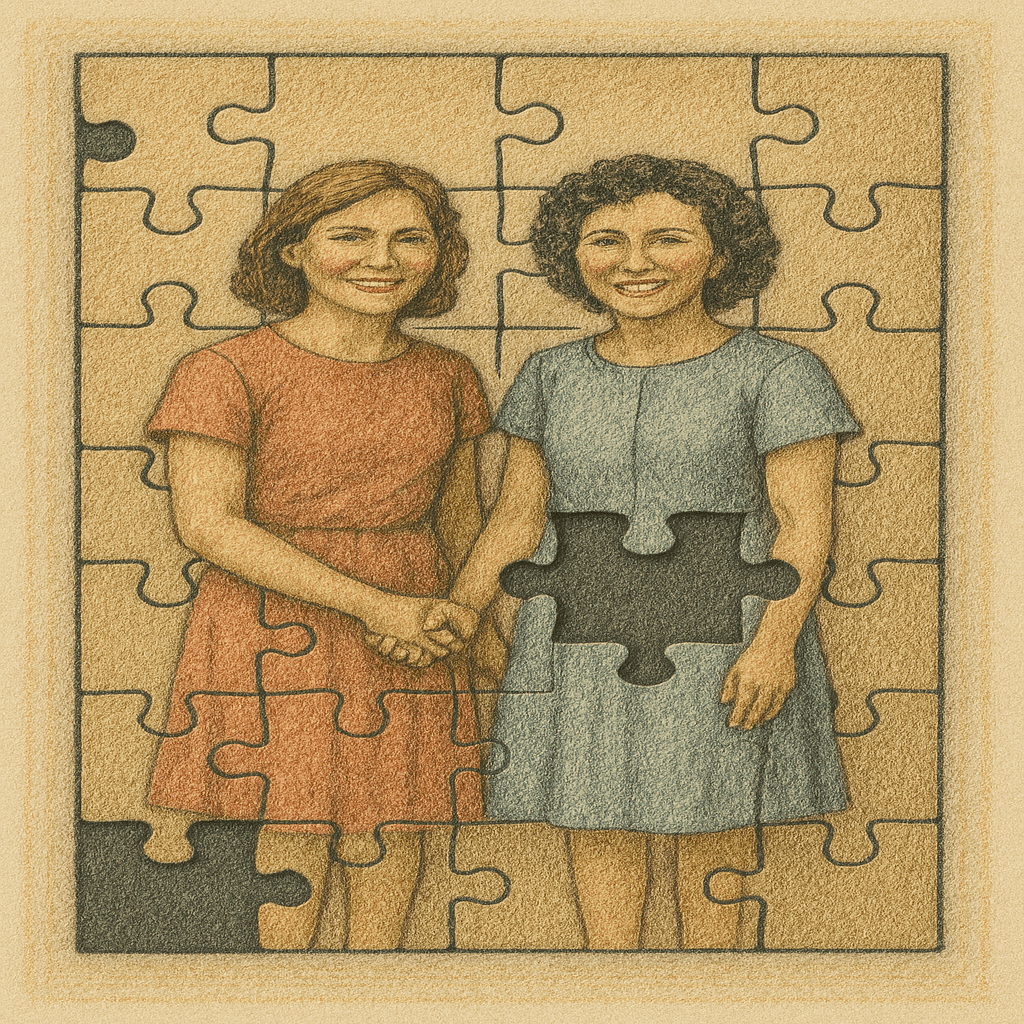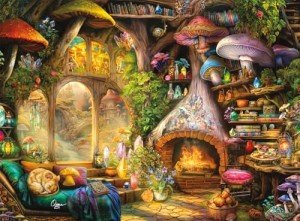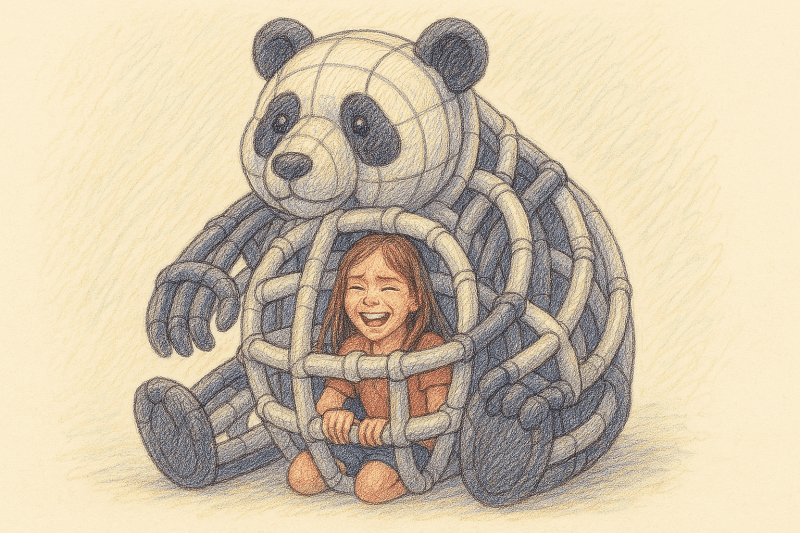In the quiet town of Pinebrook, nestled between misty hills and ancient woods, the summers were slow, the lemonade was sweet, and mysteries were things of novels—until the summer Harvey, Henry, Hanna, and Helen stumbled upon the Puzzle House.
It began with a storm.
Thunder cracked across the sky as Harvey, the curious and cautious one, spotted a glint of something silvery at the base of the old Forsythe tree near the abandoned cabin on Maple Street. The four of them—best friends since first grade—had taken shelter under its wide, twisted branches. While Helen held her sketchbook under her shirt and Henry clutched his baseball glove, Harvey reached into the mud and pulled out a puzzle piece.
It was old, wooden, and hand-painted—showing the edge of a clock tower with golden numbers. Hanna, the practical one with a brain like a filing cabinet, brushed off the dirt and frowned. "This doesn't belong out here."
That’s when Helen pointed to the rotting front door of the cabin, hanging slightly ajar. “Maybe it belongs in there.”
The Puzzle House had been empty for years. Kids told stories of strange lights and shadows, of puzzles that moved on their own, of a reclusive woman who once lived there—Miss Edeline Forsythe. Some said she was a genius. Others said she was insane.
Inside, the house smelled like forgotten time—dust, lavender, and something sharp like old paint. The furniture was covered in white sheets, and the wallpaper curled like dried leaves. But on a grand table in the parlor, perfectly clean, sat a puzzle frame, shaped like a wide circle. It was missing every piece.
Harvey placed the clock tower piece into the frame.
The entire room seemed to inhale. A strange, almost musical hum filled the air. Then, the grandfather clock in the corner—silent for decades—chimed once. The kids jumped.
“What was that?” Henry asked, backing toward the door.
But Hanna stepped forward. “This isn’t a normal puzzle.”
That night, they researched Miss Forsythe in the Pinebrook library. She had been a master puzzle maker, once world-famous for her hand-carved wooden sets. But after her sister vanished without a trace in 1971, Edeline shut herself away, creating only one last puzzle—“The Life of the Mind,” she called it—and then disappeared.
According to a yellowed newspaper clipping, she claimed that puzzle would reveal the truth behind her sister’s disappearance.
They decided they had to find the missing pieces.
The next clue came when Helen, sketching the clock tower piece from memory, noticed faint numbers painted along the edge—coordinates. They led the kids to Pinebrook’s old train station, shut down since the 1980s.
Behind a loose brick in the ticket booth wall, they found the second piece—this one showing the edge of a garden maze. Fitting it into the puzzle caused the temperature in the room to drop. The radio on the mantle crackled to life, broadcasting a station that didn’t exist anymore.
“The next piece hides where roses never bloom…” the voice whispered.
They followed the clues—through Pinebrook’s forgotten places. The cemetery where no roses grew. The dried-up well behind the town's original schoolhouse. A crumbling mural in the town hall basement. Each piece they found caused the puzzle to react—a flicker of light, a breath of wind, the scent of perfume, the distant echo of a piano.
But the mystery deepened with each discovery. The puzzle was not just revealing images; it was unlocking memories. Through journals found in hidden drawers, the kids pieced together Edeline's grief and obsession. Her sister, Rose Forsythe, hadn’t simply vanished. She had been working on a secret scientific project—something to do with cognition, memory, and… puzzles. They believed she had tried to transfer human memory into puzzles as a form of immortality.
The final piece was the hardest to find.
It was Harvey who solved the last clue, noticing a map etched on the back of a piece—barely visible. It pointed to the roots of the Forsythe tree, where it had all started.
Digging carefully, they unearthed a metal box. Inside was the final piece, along with a letter addressed to “The Ones Who Still Believe.”
They brought it back to the Puzzle House.
When Harvey placed the final piece into the frame, a quiet warmth filled the room. The puzzle shimmered—and then projected a full image into the air: Edeline and Rose, holding hands in the garden, smiling. A voice, clear and strong, echoed around them.
"To those with minds open and hearts brave: Thank you. You have found us. You have set us free."
Then the projection faded. The puzzle turned gray, its colors dull, as though it had completed its life’s purpose.
The Puzzle House fell silent.
In the days that followed, word spread about what the kids had done. Grown-ups tried to make sense of it, scientists came and went, but none could explain how the puzzle had worked—or where it had come from. But Harvey, Henry, Hanna, and Helen knew.
They had solved more than a mystery. They had uncovered love, grief, genius, and sacrifice hidden beneath dust and time. They had proven that sometimes, the pieces of the past need only a new generation to fit them together.
And that summer in Pinebrook would never be forgotten.





